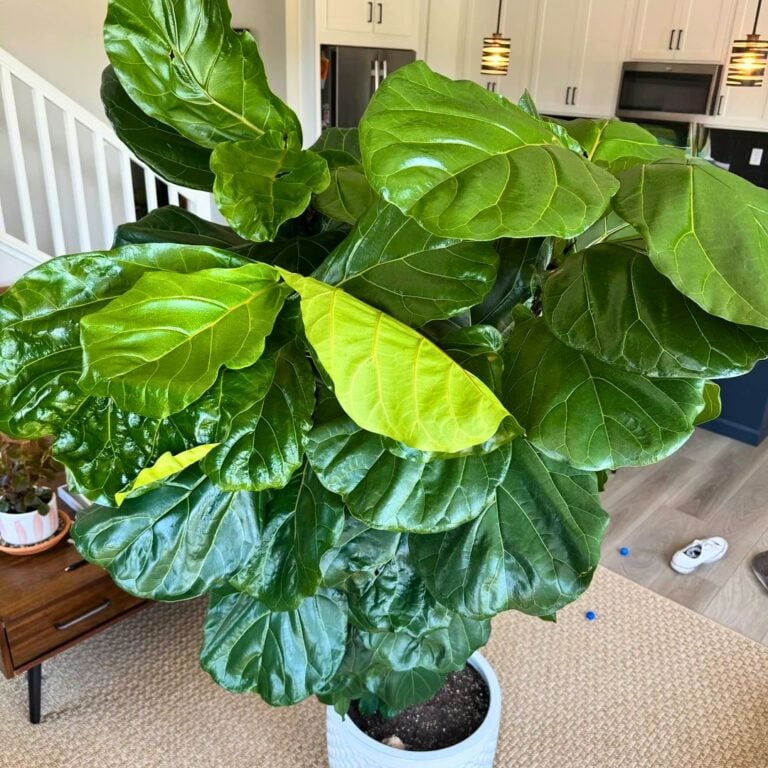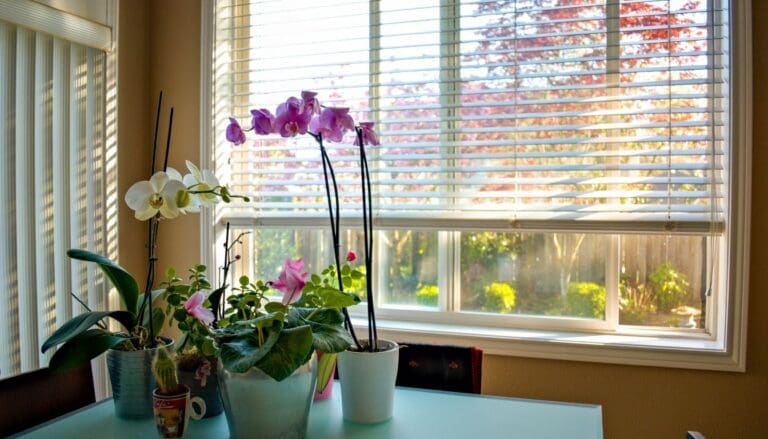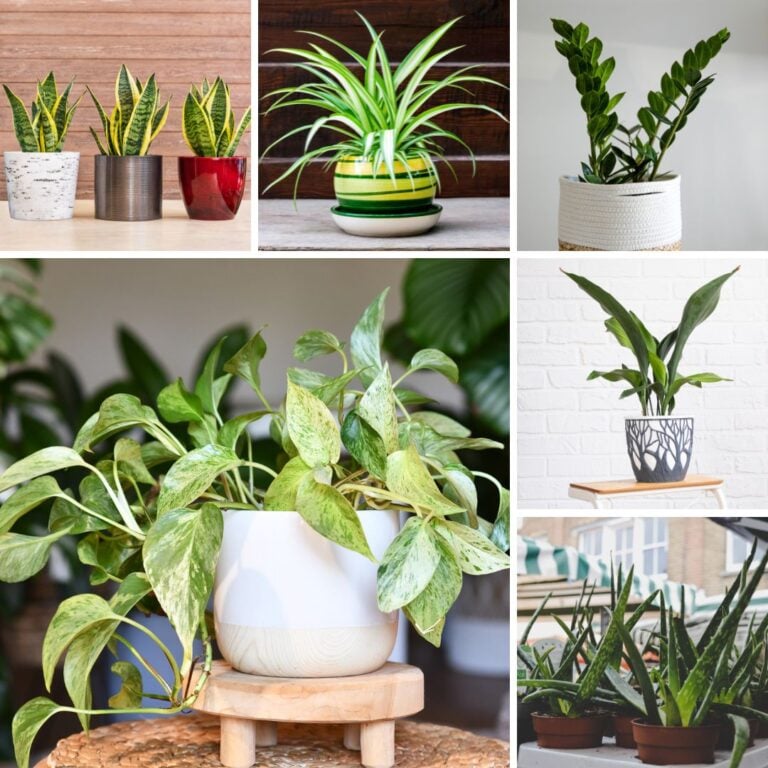5 Plant Color Pairings Inspired by Tropical Themes
I just love how tropical plants can instantly liven up a space. There’s something about those lush greens and bold flowers that always remind me of sunny getaways and lazy afternoons.
Pairing plants with the right colors really makes a garden or room pop. I’m excited to share a few of my favorite color ideas inspired by the tropics—maybe you’ll find something new to try.
Please note: Simplify Plants is reader-supported. As an Amazon Associate, I earn from qualifying purchases made by our readers with no extra cost added to you all! Some links in the post are affiliate links and I get a commission from purchases made through links in the post.
1) Coral Hibiscus with Bright Yellow Bird of Paradise
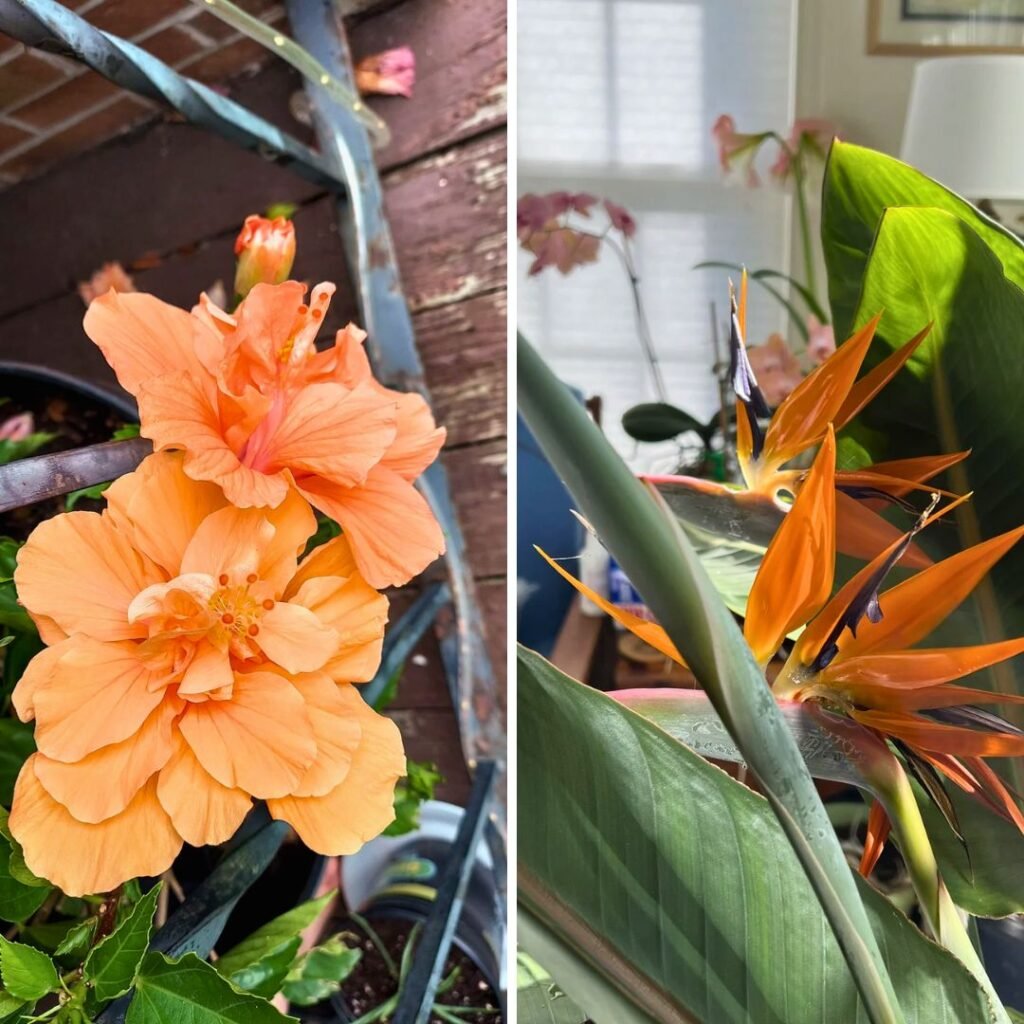
There’s nothing quite like coral hibiscus and bright yellow bird of paradise to make a garden burst with color. The soft coral petals of hibiscus look amazing next to the bold, yellow blooms of the bird of paradise.
This combo always brings vacation vibes to mind. When I plant them together, the colors seem to glow without clashing.
Coral and yellow are both such happy colors, and side by side, they create a really lively, inviting spot. Butterflies seem to love them too, which is always a bonus.
The bird of paradise has these upright, almost bird-shaped flowers that look so cool next to the open hibiscus blooms. Their shapes just work together in a way that keeps things interesting.
Another reason I go for this pair is that they both love sunlight. Both thrive in bright, warm spots, so I never have to worry about one overpowering the other.
I find this color mix works great in pots or beds. Even just one of each can make a big splash if you’re short on space.
These plants always make me think of lounging somewhere sunny and colorful, far from the daily grind.
2) Turquoise Agave paired with Pink Mandevilla
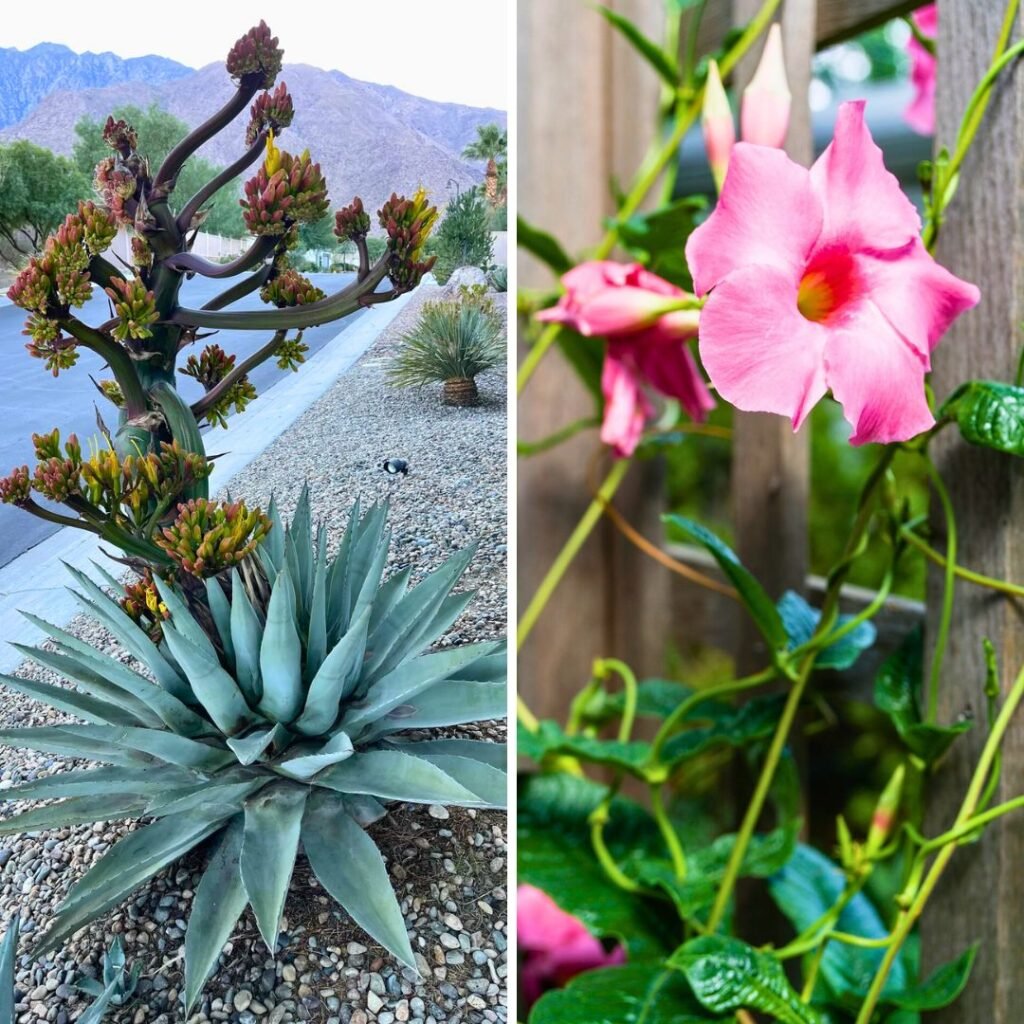
I can’t get enough of how turquoise agave pairs with the bright Pink blooms of mandevilla. The blue-green agave leaves look even cooler next to the warm Pink flowers.
This combo just feels fresh and sun-soaked to me. Turquoise agave is a succulent with thick, pointed leaves—super tough and drought-friendly.
The leaves almost sparkle in the sun, which is kind of magical. Pink mandevilla, on the other hand, brings a real burst of color.
The flowers climb up fences or trellises and just keep blooming all summer. Their bright Pink really catches the eye and honestly lifts my mood.
When I put them together, the spiky agave and soft mandevilla vines balance each other out. They look great in big pots or garden beds.
Both are easy to care for, as long as they get sun and well-drained soil. I usually keep the agave in the center or back, so the mandevilla vines can spread out.
It gives a nice layered look. Honestly, it makes my garden feel like a mini tropical escape.
I like using this pairing by my patio or front steps. People always comment on the colors and shapes.
These plants attract butterflies, too. Turquoise agave and Pink mandevilla are such a simple way to bring a bit of the tropics home.
3) Magenta Bougainvillea alongside Lime Green Croton

There’s something about magenta bougainvillea that just lights up a garden. The blooms are so bright and bold—they almost glow in the sun.
Putting them next to lime green croton makes both colors pop even more. Lime green croton has big, glossy leaves with splashes of yellow and green.
The leaves are thick and sturdy, which adds a nice contrast to the delicate bougainvillea flowers. This mix of leaf and flower shapes keeps things interesting.
Both plants love warm weather and plenty of sunlight. They always remind me of sunny tropical days.
The croton’s leaves do more than just add color—they also frame the bougainvillea’s petals, making both stand out. Pairing magenta and lime green feels playful and fresh.
If you want something lively for your garden or patio, these two together are a no-brainer. I often see this combo in photos from beach resorts, which makes me want to bring that look home.
The contrast between the deep pink-purple and light green is eye-catching, but not too much. It’s a simple way to add a bit of the tropics to your space—ground or pots, either works.
4) Deep Purple Cordyline with Vibrant Pink Ginger
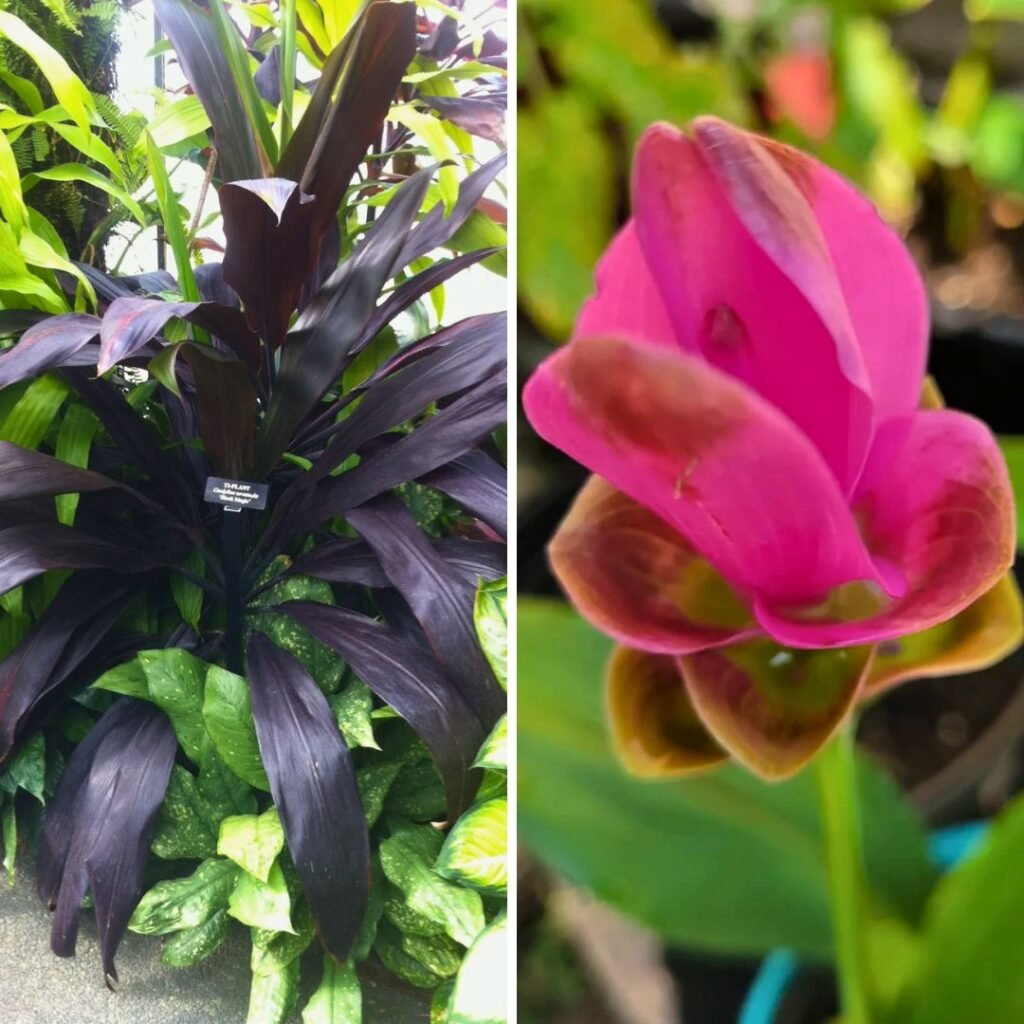
I always find Deep Purple Cordyline adds a rich, dramatic touch to any garden. Its long, dark leaves really stand out and set the stage.
When I add Vibrant Pink Ginger, everything just comes alive. The pink flowers pop against the deep purple, making both colors look even brighter.
These two together remind me of lush tropical forests. They create a bold, colorful look without much effort.
Both plants love warm weather and moist soil. I try to give them a bit of shade during the hottest part of the day so their colors stay sharp.
The combination is dramatic, but not overwhelming. Seeing them side by side always puts me in a good mood.
Deep Purple Cordyline is pretty low-maintenance and keeps its color year-round. Pink Ginger flowers can last for months, which is a treat.
This pairing works in pots or right in the ground. I like using them near walkways or seating areas for a tropical touch.
If you’re after a tropical vibe at home, this mix is one of my go-tos. Purple and pink together always get noticed and feel so welcoming.
5) Sunny Yellow Heliconia and Electric Blue Plumbago
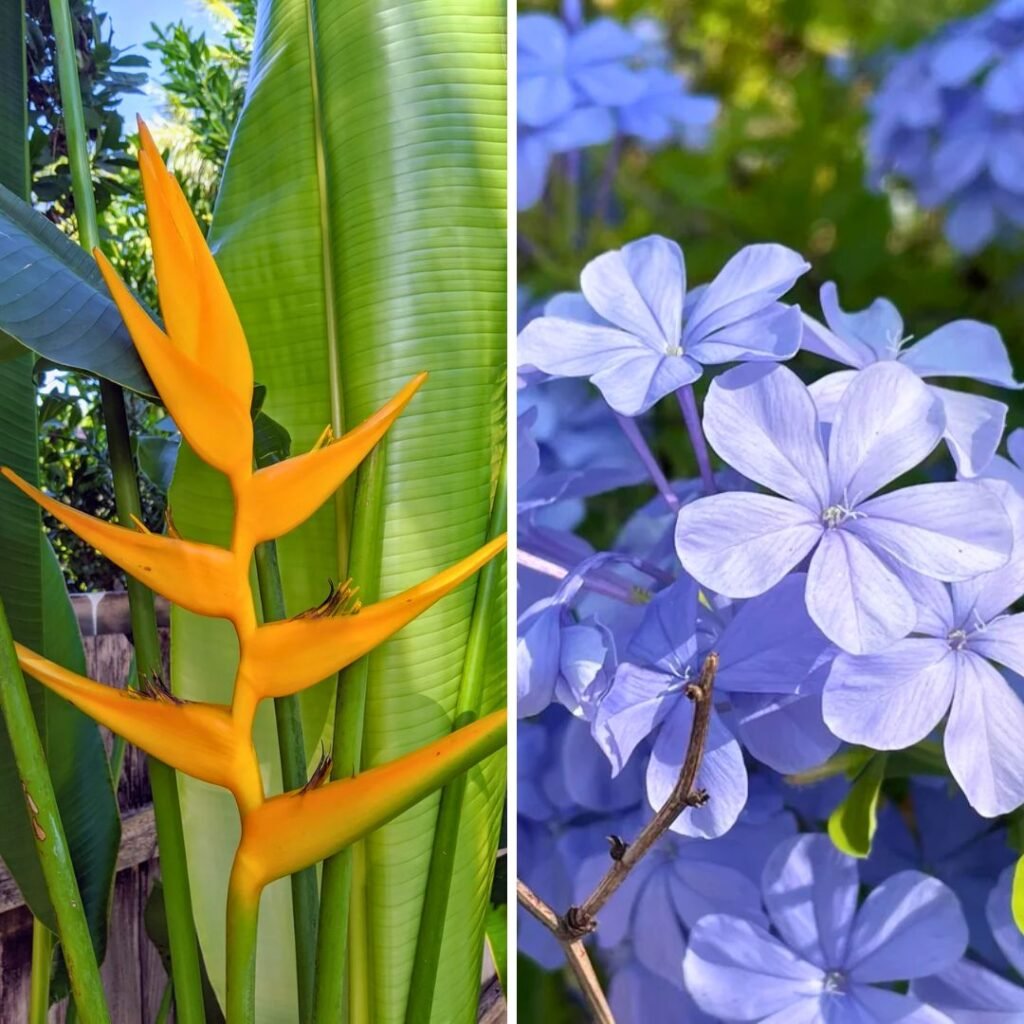
I’m a big fan of how Heliconia’s bright yellow blooms light up a garden. Their upright shape and sunny color are hard to miss.
These flowers bring that true tropical energy, even if you only have a small space. I like to pair Heliconia with Electric Blue Plumbago for a fresh burst of color.
Plumbago’s soft blue flowers look calm next to the yellow. It’s a simple way to get contrast without needing a ton of plants.
Both love full sun and do best in warm climates—just like most tropical favorites. When I plant them together, the whole garden feels happier.
Heliconia grows tall, while Plumbago spreads out low. They make a good team that fills space nicely.
I often use this combo along walkways or in the middle of flower beds. I’ve noticed that bees and butterflies are drawn to these flowers, which is always nice for the garden.
Caring for them isn’t too tricky. They both like rich, well-drained soil and regular watering.
Mulch helps keep the soil cool and moist, which they both seem to appreciate. If you want a cheerful corner, this yellow and blue mix is a solid choice.
The colors are bold but still feel relaxed together. I’ve found that people always notice this combo when they visit.
Understanding Tropical Color Theory
Tropical gardens are all about bold, vivid colors. I think it’s partly the climate, but also the fun of picking out the brightest plants.
How Tropical Climate Influences Plant Pigmentation
Tropical climates are hot and humid, with strong sunlight almost every day. That sunlight helps plants develop deeper, richer colors.
The bright sunlight makes plants create extra pigments. For example:
- Chlorophyll gives leaves those deep greens.
- Anthocyanins add reds, purples, and blues.
- Carotenoids bring out oranges and yellows.
More pigment means more color, plain and simple. Flowers in the tropics often have the brightest reds, pinks, yellows, and blues because of all that sun.
Even the leaves sometimes turn red or purple instead of just green. These colors aren’t just pretty—they can protect plants from sun or attract birds and insects.
Choosing Complementary Colors for a Lush Effect
When I’m picking plant colors, I look for pairs that really stand out next to each other—complementary colors.
Some tropical color pairs I like:
- Bright orange flowers with deep blue foliage
- Red blooms next to lime green leaves
- Purple petals near yellow bushes
My simple rule: put light and dark, or warm and cool, side by side. That’s what makes gardens feel full and energetic.
I keep a table like this in mind:
| Color | Complementary |
|---|---|
| Red | Green |
| Orange | Blue |
| Yellow | Purple |
Mixing the right colors makes everything pop, even if you only have a few plants.
Tips for Maintaining Vibrant Plant Pairings
To keep plant colors looking their best, I try to pay attention to their special care needs. Getting soil and light right really makes a difference.
Soil and Light Requirements for Tropical Plants
I always check the soil type before planting. Most tropical plants need loose, well-draining soil, not heavy clay.
I like to mix in peat moss or coconut coir to help hold moisture but avoid root rot. Light is just as important.
I put my tropicals where they’ll get bright, indirect sunlight. Too much direct sun can burn leaves, but not enough makes colors fade.
When window light isn’t great, I’ll use grow lights to help out. I keep an eye out for stress—pale or brown leaves—and adjust things if needed.
That way, my plant color pairings always look their best.
Frequently Asked Questions
For me, creating a tropical-themed garden is all about mixing bold colors, picking vibrant plants, and keeping their shades fresh. I love choosing plant pairs that really stand out and give my garden that lush, eye-catching vibe.
What are some vibrant color combinations to give my garden a tropical feel?
I use coral hibiscus with bright yellow bird of paradise for a sunny, energetic mix.
Pairing turquoise agave with orange mandevilla gives my space a strong, lively contrast.
Can you suggest some plant varieties that pair well for a tropical-themed landscape?
I like combining magenta bougainvillea with lime green croton for bold pops of color.
For a dramatic look, I plant deep purple cordyline with vibrant pink ginger.
What are the best foliage colors to incorporate for a tropical garden vibe?
I pick plants with lime green, deep purple, and turquoise leaves.
Those colors keep my garden feeling lush and exciting all year.
How can I use color to create a lush, tropical ambiance in my outdoor space?
I mix bright flowers and bold foliage throughout my garden.
Planting in clusters helps the colors look fuller and more eye-catching.
What flowering plants can I combine to achieve a bold, tropical color scheme?
I combine sunny yellow heliconia and electric blue plumbago for a stunning look.
Coral hibiscus next to orange mandevilla also catches lots of attention.
Are there any tips for maintaining the vibrant colors in a tropical-themed garden?
I try to keep those colors popping by making sure my plants get plenty of sunlight and water.
Snipping off dead leaves and spent flowers really helps the garden look lively—honestly, it makes a bigger difference than you’d think.
Recommended Garden Supplies
| Product Image | Our Recommended Gardening Supplies | Check Offers! |
|---|---|---|
Top Top
Top
Top
Top
Top
Top
Top
Top | rePotme Houseplant and Tropical Classic Potting Soil Mix | Check Offer On Amazon |
 Top
Top
Top
Top
Top
Top
Top
Top | Espoma Organic Indoor Plant Food | Check Offer On Amazon |
 Top
Top
Top
Top
Top
Top
Top
Top | GooingTop LED Grow Light 6000K Full Spectrum Clip Plant Growing Lamp | Check Offer On Amazon |
 Top
Top
Top
Top
Top
Top
Top
Top | Soil Moisture Meter | Check Offer On Amazon |
 Top
Top
Top
Top
Top
Top
Top
Top | Govee Hygrometer Thermometer, Bluetooth Enabled! | Check Offer On Amazon |
 Top
Top | LEVOIT Humidifiers for Large Room(Best For Plants) | Check Offer On Amazon |
 Top
Top
Top
Top
Top
Top
Top
Top | Upgraded DIY Automatic Drip Irrigation Kit, 15 Potted Houseplants Support | Check Offer On Amazon |
 Top
Top
Top
Top
Top
Top
Top
Top | Stainless Steel Heavy Duty Gardening Tool Set | Check Offer On Amazon |
 Top
Top
Top
Top
Top
Top
Top
Top | Bonide Insecticidal Soap | Check Offer On Amazon |
 Top
Top
Top
Top
Top
Top
Top
Top | Bonide 32 oz Spray Neem Oil for Organic Gardening | Check Offer On Amazon |
 Top
Top
Top
Top
Top
Top
Top
Top | Garden Safe Fungicide | Check Offer On Amazon |

